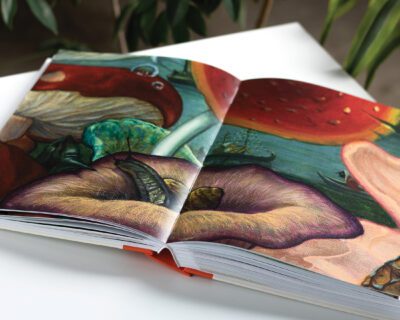Source: memorialcovid-lozano-hemmer.web.app
At Brooklyn Museum, ‘A Crack in the Hourglass’ turns mourning into meditative art
Artist Rafael Lozano-Hemmer’s participatory sand installation honors the 5.5 million (and counting) lost to Covid-19
As of this writing, the Covid-19 pandemic has claimed the lives of 5.5 million people globally—an unfathomable toll and a grim milestone in a seemingly endless stream of grim milestones. Meanwhile, social distancing and isolation, while necessary, have robbed family and friends of the ability to gather and collectively mourn loved ones lost to the pandemic.
How then to memorialize and visualize this extraordinary loss? Media artist Rafael Lozano-Hemmer responded to the question with “A Crack in the Hourglass,” an unusual and poetic sand installation created as a fleeting memorial for the victims of Covid. This singular art project, currently at The Brooklyn Museum through June 26, invites people from all over the world to participate, honor, and grieve.
Here’s how it works: Anyone from anywhere in the world may submit a photograph of someone who has died from Covid-19, accompanied by a personal dedication, and watch, either in-person, or via live stream, as a robotic arm deposits grains of sand onto a black surface and a portrait begins to take shape. When the portrait is completed, gravity slowly erases the image. The same sand is then recycled into the next portrait, a reminder that in death we are all equal.
Printed photographs and videos of the sand portraits are added to the installation throughout the duration of the exhibition.
The entire process takes about 20 to 40 minutes, depending on the complexity of the picture. “In real time we are present at the creation of a face traced in the sand, a medium that marks not only the passage of time, but also our own materiality,” says Lozano-Hemmer. “ But just as quickly, the board tilts forward, the sand slips, the image dissolves, and only a black backboard remains.”
Originally commissioned by the Museo Universitario Arte Contemporáneo in Mexico City in 2020, it was intended to be installed on-site. But the logistical realities of the pandemic soon made that impossible. Lozano-Hemmer’s installation at the Brooklyn Museum provides the first opportunity to experience this ‘anti-monument,’ as it is referred to, live.
“People have asked me if it’s kind of violent the way the image disappears, but that’s exactly what a funeral is. It’s a closure,” says Lozano-Hemmer. “It’s this chance to see this image one last time and then help you understand that it’s over and that you need to let go.”
The work is also personal for Lozano-Hemmer. In March of 2020, while visiting New York from his home in Montreal, he caught the virus in its earliest days.“I may have been the one that caused Canada to catch it because I was very early,” he says. Lozano-Hemmer has asthma so, for a while, it was a bit dicey, but, he says he was able to avoid hospitalization with the help of steroids.
Two of his friends, one in Mexico and one in Spain, were not as lucky. “It’s been quite a time of loss and a time of mourning, “ says Lozano-Hemmer. And thus the inspiration for turning mourning into art. “For me, art has always been a good vehicle for mourning, but also a vehicle to express continuity.”
The title of the show, “A Crack in the Hourglass,” is also a metaphor for our broken sense of time during the pandemic. And yet the idea of an anti-monument is very of-the-moment. In an interview with the Guardian, Lozano-Hemmer explained: “Right now in the United States there’s such a conflictive, and understandably revisionist, history of who gets to be in those monuments because we’re understanding that they come at the expense of exclusions and historical injustice.”
Drew Sawyer, one of the curators of the Brooklyn exhibition, tells Brooklyn Magazine that “monuments are usually geared towards the idea of nationalism, and here it’s a global project that allows access for people to participate no matter where they’re located. At the end of the day, Rafael is deeply a humanist—he believes in humanity—and I think the project attempts to create a space that allows a sense of shared humanity even though, of course, we know that the pandemic has affected different countries, different communities unequally.”
Raphael Lozano-Hemmer’s “A Crack in the Hourglass” will be on display until June 26, 2022. Submissions by visitors in the exhibition until then will be prioritized, so they can view the memorial in person before its archived online. For those who can’t make it to the museum, memorials will also be streamed live on the project’s website where one can scroll through the portraits already completed.
You might also like 


























